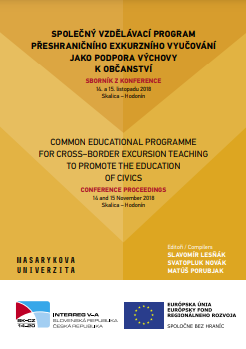Amatérski zberatelia ľudového umenia a starožitností. Osobná aktivita jednotlivcov a jej význam v začiatkoch muzeálnej činnosti
Amateur Collectors of Folk Art and Antiques. Personal Activity of Individuals and Its Importance in the Beginnings of Museum Activity
Author(s): Martina Bocánová
Subject(s): Fine Arts / Performing Arts, Museology & Heritage Studies, Customs / Folklore, Recent History (1900 till today)
Published by: Masarykova univerzita nakladatelství
Keywords: museum; museology; folk art; collecting; city;
Summary/Abstract: The study deals with the development of museology by not only pointing to the socio-political situation of the time, but also by emphasizing the important personalities of the region. In Trnava, the collection activity was developed in two directions – the organized form and enthusiasts, for whom the collection of historical artefacts was a personal challenge. The Franz R Osvald Museum Company was founded in Trnava and its ambition was to associate people interested in history. Its main objectives were the management, preservation and presentation of historical, ethnographic and archaeological collections, which were handed over by the Saint Adalbert Association. Besides the organized way of work and enrichment of museum funds, we also know amateur collectors and artists interested in historical artefacts. The outstanding personality of the region was Štefan Cyril Parrák, who devoted his life to collecting folk art. Thanks to his enthusiasm, he gathered large quantities of historical objects of considerable historical, archaeological and cultural value. His huge personal collection has become one of the basic building blocks of the Western Slovakia museum in Trnava and has helped this museum to move from the position of a regional museum to that of a national museum, among other important institutions of this type in Slovakia. Despite the disintegration of his family and many existential problems, Štefan Cyril Parrák concentrated on the collection and preservation of historical objects during the Second World War. His activity was paralyzed due to the political events in 1948, when his house was nationalized. In 1954, this magnificent collection was moved to the Western Slovakia museum in Trnava and became the property of the state. The study presents not only the beginnings of the conception of an important collection fund in Trnava but also the life story of a man in the background of the socio-political events of the time.
- Page Range: 182-187
- Page Count: 6
- Publication Year: 2019
- Language: Slovak
- Content File-PDF

